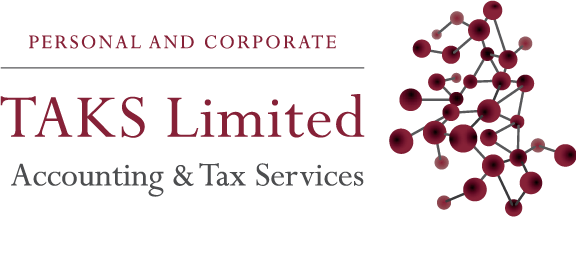
By Tanya Angelova
•
24 Apr, 2024
In the realm of tax planning, Gift Hold-Over Relief (GHO) stands out as a valuable strategy for individuals looking to transfer assets while mitigating potential capital gains tax (CGT) liabilities. Whether you're considering passing on assets to family members or restructuring your business, understanding how to navigate GHO can be instrumental in optimizing your tax position. In this blog, we'll explore what GHO is, how it works, and the steps involved in utilizing this tax relief effectively. What is Gift Hold-Over Relief? Gift Hold-Over Relief is a provision in the United Kingdom's tax legislation that allows individuals or businesses to transfer certain assets without triggering an immediate capital gains tax liability. Instead of paying CGT at the time of the transfer, the individual or business "holds over" the gain, deferring the tax until a later date when the recipient disposes of the asset. How Does Gift Hold-Over Relief Work? The mechanism of GHO operates on the principle of deferring CGT liability rather than eliminating it entirely. When an individual or business transfers an asset and elects for GHO, they effectively transfer the gain to the recipient along with the asset. The recipient then assumes the transferor's original acquisition cost for CGT purposes, effectively "inheriting" the gain. Before proceeding with Gift Hold-Over Relief, it's essential to understand the following key points: Qualifying Assets: GHO is applicable to a wide range of assets, including shares, securities, land, buildings, and certain intangible assets. However, not all assets are eligible for relief, so it's crucial to consult HM Revenue and Customs (HMRC) guidelines or seek professional advice. Transfer Conditions: The transferor must be disposing of the asset by way of gift, and the recipient must be a connected person, such as a spouse, civil partner, or certain relatives. Transfers to companies may also qualify under certain circumstances. Election Requirement: To benefit from GHO, both the transferor and the recipient must jointly elect for the relief in writing and submit it to HMRC within specified time limits. Future CGT Liability: While GHO defers the CGT liability, it does not eliminate it entirely. The deferred gain will be brought into account for CGT purposes when the recipient disposes of the asset in the future. Steps to Utilize Gift Hold-Over Relief: To effectively utilize Gift Hold-Over Relief, follow these steps: Assess Eligibility: Determine whether the asset transfer meets the qualifying conditions for GHO, considering factors such as the nature of the asset, the relationship between the transferor and recipient, and the intended use of the relief. Calculate Gain: Calculate the capital gain arising from the transfer by subtracting the original acquisition cost from the market value of the asset at the time of the transfer. Complete Election Form: Complete the necessary election form (form CGT20) jointly with the recipient and submit it to HMRC within the prescribed time frame, typically within specified deadlines. Record Keeping: Maintain comprehensive records of the asset transfer, including documentation supporting the calculation of the gain, the election form, and any relevant correspondence with HMRC. Monitor Future Disposal: Keep track of the transferred asset and any subsequent disposal by the recipient, as the deferred gain will be brought into account for CGT purposes at that time. Gift Hold-Over Relief presents a valuable opportunity for individuals and businesses to transfer assets tax-efficiently while deferring capital gains tax liabilities. By understanding the eligibility criteria, process, and implications of GHO, taxpayers can make informed decisions regarding asset transfers, succession planning, and business restructuring. Consulting with tax advisors or professionals can provide further guidance tailored to individual circumstances, ensuring compliance with HMRC regulations and maximizing the benefits of this valuable tax relief strategy.

By Tanya Angelova
•
23 Apr, 2024
Investors' Relief is a form of capital gains tax relief and it aims to incentivize individuals to invest in businesses by providing them with a reduced rate of CGT when they dispose of qualifying investments. How does Investors' Relief work Investors' Relief allows eligible investors to benefit from a reduced rate of CGT at 10% on qualifying gains, compared to the standard CGT rate of 20% or 28%, depending on the taxpayer's income and the type of asset disposed of. This relief applies to gains realized on the disposal of qualifying shares in unlisted trading companies or qualifying holdings in partnerships. Qualifying Criteria: To qualify for Investors' Relief, certain criteria must be met: Ownership Period: The investor must have held the qualifying shares or securities for at least three years before the disposal date Participation Requirement: The investor must be an officer or employee of the company or hold at least a 5% shareholding and have voting rights in the company. Qualifying Business: The company must be an unlisted trading company or the holding company of a trading group. Use of Funds: The funds invested in the company must be used for the purpose of its trade. Benefits of Investors' Relief: Investors' Relief offers several benefits to eligible investors: Reduced Tax Liability: The most significant benefit is the reduced rate of CGT at 10%, allowing investors to retain a higher portion of their investment gains. Encouragement of Investment: By incentivizing investment in qualifying businesses, Investors' Relief stimulates economic growth and encourages entrepreneurship. Long-Term Investment Incentive: The three-year ownership requirement encourages investors to maintain a long-term perspective, fostering stability and commitment to the businesses they invest in. Who Can Benefit from Investors' Relief? Investors' Relief is primarily targeted at individuals who invest in unlisted trading companies or qualifying holdings in partnerships. This includes: Entrepreneurs looking to invest in their own or other businesses. Angel investors seeking to support early-stage startups and innovative ventures. Venture capitalists and private equity investors. Employees who receive shares or securities as part of their remuneration package. Investors' Relief serves as a valuable tool for both investors and businesses, providing a tax-efficient mechanism to support entrepreneurship and investment in the UK. By offering a reduced rate of CGT on qualifying gains, it encourages long-term investment in unlisted trading companies, thereby fostering economic growth and innovation. Understanding the eligibility criteria and benefits of Investors' Relief can empower investors to make informed decisions and maximize the potential returns on their investments.

By Tanya Angelova
•
18 Apr, 2024
Planning for retirement is crucial, yet many individuals find themselves unsure about the best strategies to secure their financial future. Among the myriad of options available, one that often stands out is the salary sacrifice pension scheme. But what exactly is a salary sacrifice pension, and how does it work? What is a Salary Sacrifice Pension? A salary sacrifice pension, also known as a salary exchange or salary redirection scheme, is a method of boosting your retirement savings by redirecting a portion of your pre-tax salary into your pension fund. Instead of receiving this part of your salary as cash in hand, you agree to sacrifice it and have it contributed directly to your pension pot by your employer. How Does it Work? Agreement between Employee and Employer: To set up a salary sacrifice pension, you and your employer must enter into a formal agreement. This agreement outlines the terms, including the amount of salary you will sacrifice and the duration of the arrangement. Redirection of Salary: Once the agreement is in place, your employer will adjust your employment contract to reflect the reduced salary amount. The sacrificed portion of your salary is then redirected to your pension fund before tax is deducted, effectively reducing your taxable income. Employer Contribution: In addition to your sacrificed salary, your employer may choose to contribute a portion to your pension fund. This contribution can vary depending on your employer’s policies and the terms of your agreement. Tax and National Insurance Savings: Since the sacrificed portion of your salary is not subject to income tax or National Insurance contributions, you benefit from immediate tax savings. This means more of your earnings go towards building your retirement nest egg. Pension Growth: The funds redirected to your pension pot are invested in accordance with your chosen investment strategy. Over time, these investments have the potential to grow, helping to boost your retirement savings further. Retirement Benefits: When you reach retirement age, you can access your pension fund to provide you with an income in retirement. The amount you receive will depend on various factors, including the performance of your investments and the options available to you at retirement. Benefits of a Salary Sacrifice Pension Tax Efficiency: By sacrificing a portion of your salary before tax, you benefit from immediate tax savings, effectively increasing the amount going towards your retirement savings. Employer Contributions: Some employers choose to match or contribute a percentage of your sacrificed salary to your pension fund, effectively increasing your retirement savings without any additional cost to you. Long-Term Growth Potential: The funds redirected to your pension pot have the potential to grow over time, thanks to the power of compounding and the performance of your chosen investments. Simplicity: Once set up, a salary sacrifice pension requires minimal ongoing effort on your part. Your contributions are deducted automatically from your salary, making it a hassle-free way to save for retirement. While a salary sacrifice pension can be a valuable tool for building your retirement savings, there are some important considerations to keep in mind: Impact on Benefits : Reducing your salary through a salary sacrifice arrangement may affect your entitlement to certain state benefits, so it’s essential to consider the potential implications carefully. Pension Limits: There are limits to how much you can contribute to your pension each year while still receiving tax relief. These limits include the annual allowance and the lifetime allowance, so be sure to stay within these limits to avoid potential tax penalties. Flexibility: Once you enter into a salary sacrifice agreement, it may be challenging to adjust or opt out of the arrangement, so it’s important to consider whether it aligns with your long-term financial goals. A salary sacrifice pension can be a powerful tool for boosting your retirement savings while enjoying immediate tax benefits. By sacrificing a portion of your salary and redirecting it to your pension pot, you can take advantage of tax efficiency, employer contributions, and long-term growth potential. However, it’s essential to weigh the potential benefits against any implications for benefits entitlement and pension contribution limits. Ultimately, a salary sacrifice pension can be a smart strategy to help you achieve your retirement goals and enjoy financial security in later life.

By Tanya Angelova
•
17 Apr, 2024
In the UK, car allowances can indeed be subject to taxation, depending on how they are structured and utilized by the employer and employee. Let me break down the factors: Type of Allowance: When it comes to car allowances offered by employers, there are several structures that can be implemented to accommodate different needs. For instance, the allowance could be a fixed amount paid on a regular basis to assist with expenses associated with using a personal vehicle for work-related tasks. Alternatively, it might be a specific sum designated to cover the expenses of leasing or owning a car, providing flexibility and support to employees who rely on their vehicles for work purposes. Usage: The tax implications of a car allowance are contingent upon its usage. When the allowance is clearly allocated for business-related travel and substantiated by accurate records, it may be exempt from tax. Conversely, if the allowance is provided without consideration of actual business mileage or usage, it is more likely to be deemed taxable. HMRC Guidelines: The UK's tax authority, HM Revenue & Customs (HMRC), plays a crucial role in providing clear and comprehensive guidelines on how car allowances should be treated for tax purposes. Understanding the implications of car allowances is essential for both employers and employees to ensure compliance with tax regulations. If the allowance is deemed to be part of an employee's earnings, it will be subject to income tax and National Insurance contributions, highlighting the importance of adhering to HMRC's guidance to avoid potential tax liabilities and penalties. By following HMRC's regulations on car allowances, businesses and individuals can navigate the complexities of taxation with confidence and certainty. Company Cars: If the employer provides a company car as part of the employment package, the tax implications are different. In this case, the value of the benefit is calculated using a specific formula based on factors like the car's list price, CO2 emissions, and fuel type. This value is added to the employee's income and taxed accordingly. Salary Sacrifice Schemes: Some employers offer car allowances as part of a salary sacrifice scheme, where the employee agrees to give up a portion of their salary in exchange for certain benefits, such as a company car or cash allowance. By participating in such arrangements, employees can enjoy the convenience and cost savings associated with having a vehicle provided by their employer. However, it's important to note that these agreements come with specific tax implications that can affect both parties. Therefore, it is crucial for employers and employees to have a comprehensive understanding of the tax implications and legal requirements associated with car allowances to ensure compliance and avoid any potential issues down the road. In summary, while car allowances themselves aren't inherently taxable, their tax treatment depends on various factors such as how they're structured, their intended use, and whether they're provided in addition to other benefits like a company car. It's advisable for both employers and employees to consult with tax advisors or HMRC for specific guidance tailored to their circumstances. By seeking professional advice, they can ensure they are making informed decisions that align with current tax regulations and optimize their financial planning in the long term. Taking the time to understand the nuances of car allowances and their tax implications can lead to more strategic and advantageous choices for both parties involved.

By Tanya Angelova
•
15 Apr, 2024
In cases where a dispute arises regarding the 'quality of occupation,' it is essential to provide evidence to support the following criteria: a degree of permanence, a degree of continuity, or the expectation of continuity. Without meeting these requirements, a property may not be considered a 'residence' for the purposes of capital gains tax (CGT) private residence relief. Therefore, it is crucial to establish and demonstrate the lasting nature and expectations of occupancy in order to qualify for this relief. Factors indicative of occupation as main residence: I ncome not generated from property sales Your income is entirely unrelated to the proceeds received on the disposal of properties Property used as an address for correspondence You use this address as the registered address in connection with HMRC, driving licence, utility bills and banks No Council tax discount You are not receiving a ‘second home’ or ‘empty home’ discount from council tax in respect of the property Family live with you at the property Where applicable, your family reside with you at the property rather than at another property of yours. Utility services All of the utility services are connected and the usage of these services – evidenced by your bills – shows that the property is being used as a residence. Marketing of the property The property was occupied as a main residence before it was put on the market with estate agents. Factors indicative not occupied as main residence Income from property sales Where one receives the majority of their income from selling properties then this might point towards the fact that the property was not occupied as a main residence. Postal address If you use an alternative property as the registered address in connection with HMRC, driving licence, utility bills and banks then this is likely to be indicative that it is not your main residence. Council tax discount has been claimed A Tribunal is likely to be persuaded that the property was not occupied as a main residence by HMRC if one has applied for an ‘empty home’ discount. Family Of course, families can be quite complex these days. However, in the absence of other reasons, if all of the rest of your family live in another property throughout the week and you are claiming to live in a different property then this might point to the fact that the other property is really your residence. Utility services Where either the mains are not fully connected or their usage is minimal then this is likely to point towards the conclusion that this is not occupied as a main residence. Marketing of the property Where a property is put on the market before moving in to the property or before an intention to live in as the residence then this may be indicative of the property not being a residence.

By Tanya Angelova
•
27 Mar, 2024
In the realm of business operations, few elements are as vital to sustained success as effective cash flow management. Cash flow, often described as the lifeblood of a business, refers to the movement of money in and out of a company, encompassing revenue generation, expenses, and investments. While profitability is undoubtedly crucial, it's the careful management of cash flow that ensures a business's ability to thrive and weather economic uncertainties. In this article, we'll explore the importance of cash flow management and its impact on the overall health and longevity of your business. Sustaining Day-to-Day Operations Effective cash flow management is essential for meeting the daily financial obligations of your business, such as paying suppliers, covering payroll expenses, and managing utility bills. By maintaining a healthy cash flow, you can ensure that your business operates smoothly without encountering liquidity crises or cash shortages that could disrupt operations and damage your reputation. Seizing Growth Opportunities Cash flow management enables you to seize growth opportunities as they arise. Whether it's investing in new equipment, expanding your product line, or hiring additional staff, having a solid grasp of your cash flow position allows you to make informed decisions and allocate resources strategically. By leveraging surplus cash flow, you can fuel expansion initiatives and position your business for long-term success. Managing Seasonal Fluctuations Many businesses experience seasonal fluctuations in revenue and expenses, which can pose challenges to cash flow management. By anticipating these fluctuations and implementing proactive strategies, such as building cash reserves during peak periods and reducing expenses during slower months, you can mitigate the impact on your business's financial stability and maintain consistent cash flow throughout the year. Meeting Financial Obligations Timely payment of bills, loans, and taxes is critical to maintaining the trust and confidence of creditors, suppliers, and government authorities. Effective cash flow management ensures that you have the necessary funds available to meet these financial obligations promptly. By prioritizing payments and managing cash flow effectively, you can avoid late fees, penalties, and damage to your credit rating, preserving your business's financial reputation. 5. Enhancing Decision-Making A clear understanding of your business's cash flow position empowers you to make informed decisions about resource allocation, pricing strategies, and investment priorities. By regularly monitoring cash flow metrics and conducting cash flow forecasts, you can identify trends, anticipate potential challenges, and proactively address issues before they escalate. This proactive approach to cash flow management enhances your ability to navigate uncertainties and capitalize on opportunities in a dynamic business environment. In conclusion, cash flow management is a cornerstone of sound financial management and essential for the success and sustainability of your business. By maintaining a healthy cash flow, you can ensure the smooth operation of day-to-day activities, seize growth opportunities, manage seasonal fluctuations, meet financial obligations, and enhance decision-making capabilities. Whether you're a small startup or a large corporation, prioritizing cash flow management enables you to build resilience, adaptability, and long-term viability in an ever-changing business landscape. Therefore, investing time and resources in optimizing your cash flow management practices is not just a strategic choice—it's a fundamental requirement for maximizing your business's potential and achieving sustainable growth.

By Tanya Angelova
•
25 Mar, 2024
As April 2024 approaches, there's a question lingering in the minds of many self-employed individuals and small business owners in the UK: Will Class 2 National Insurance Contributions (NICs) still exist? This longstanding component of the UK's tax system has been subject to speculation and reform in recent years. Let's delve into the topic to understand the current situation and what the future might hold. Understanding Class 2 NICs Class 2 NICs are a type of National Insurance contribution paid by self-employed individuals in the UK. Historically, they've been a way for self-employed workers to contribute towards their state pension and other benefits such as maternity allowance and bereavement benefits. Previous Reforms and Announcements The future of Class 2 NICs has been uncertain for some time now. In 2015, the government announced plans to abolish Class 2 NICs as part of efforts to simplify the tax system for self-employed individuals. However, these plans were later postponed due to concerns about the impact on certain groups, such as low-earning self-employed individuals. Changes Postponed: What Happened? The initial plan to abolish Class 2 NICs was postponed primarily because of concerns surrounding the impact on those with low profits or those who fell below the small profits threshold. Class 2 NICs were seen as providing a simple and affordable way for these individuals to protect their entitlement to the state pension and other benefits. Future Prospects Yes, Class 2 NICs will still exist but primarily to allow self-employed individuals with profits below the Lower Profits Limit to make voluntary contributions. The rate will be frozen at £3.45 per week for the 2024/25 tax year, and the Small Profits Threshold for self-employed individuals will remain at £6,725. According to Autumn Statement 2023, further reforms of Class 2 NICs are expected this year, with the goal of abolition. This was reconfirmed in the Spring Budget with the promise of a future consultation, but no details have been published at the time of writing. Class 2 NICs may also remain relevant after 6 April 2024 for individuals working overseas (either employed or self-employed). Subject to meeting the relevant criteria, Class 2 NICs can be paid in these circumstances to count towards contributory state benefits. Further details are provided in HMRC’s Guidance on Social Security abroad. Most other circumstances involving voluntary payment of NICs require payment of Class 3 NICs. The benefit to those working overseas of paying voluntary Class 2 NICs, where permitted, as opposed to Class 3 NICs is that the cost is significantly lower. For the 2023/24 tax year, the Class 3 weekly rate is £17.45, compared with £3.45 for Class 2. As April 2024 approaches, the future of Class 2 NICs remains uncertain. While they still exist for now, there's ongoing speculation about their eventual abolition and what that might mean for self-employed individuals in the UK. As always, it's essential for self-employed individuals to stay informed about any changes to the tax system and how they might affect their financial planning. In conclusion, while Class 2 NICs continue to exist at present, their fate beyond April 2024 remains unclear. Stay tuned for updates and be prepared to adapt to any changes that may arise in the coming months and years.

By Tanya Angelova
•
18 Mar, 2024
As April 2024 approaches, there's a question lingering in the minds of many self-employed individuals and small business owners in the UK: Will Class 2 National Insurance Contributions (NICs) still exist? This longstanding component of the UK's tax system has been subject to speculation and reform in recent years. Let's delve into the topic to understand the current situation and what the future might hold. Understanding Class 2 NICs Class 2 NICs are a type of National Insurance contribution paid by self-employed individuals in the UK. Historically, they've been a way for self-employed workers to contribute towards their state pension and other benefits such as maternity allowance and bereavement benefits. Previous Reforms and Announcements The future of Class 2 NICs has been uncertain for some time now. In 2015, the government announced plans to abolish Class 2 NICs as part of efforts to simplify the tax system for self-employed individuals. However, these plans were later postponed due to concerns about the impact on certain groups, such as low-earning self-employed individuals. Changes Postponed: What Happened? The initial plan to abolish Class 2 NICs was postponed primarily because of concerns surrounding the impact on those with low profits or those who fell below the small profits threshold. Class 2 NICs were seen as providing a simple and affordable way for these individuals to protect their entitlement to the state pension and other benefits. Future Prospects Yes, Class 2 NICs will still exist but primarily to allow self-employed individuals with profits below the Lower Profits Limit to make voluntary contributions. The rate will be frozen at £3.45 per week for the 2024/25 tax year, and the Small Profits Threshold for self-employed individuals will remain at £6,725. According to Autumn Statement 2023, further reforms of Class 2 NICs are expected this year, with the goal of abolition. This was reconfirmed in the Spring Budget with the promise of a future consultation, but no details have been published at the time of writing. Class 2 NICs may also remain relevant after 6 April 2024 for individuals working overseas (either employed or self-employed). Subject to meeting the relevant criteria, Class 2 NICs can be paid in these circumstances to count towards contributory state benefits. Further details are provided in HMRC’s Guidance on Social Security abroad. Most other circumstances involving voluntary payment of NICs require payment of Class 3 NICs. The benefit to those working overseas of paying voluntary Class 2 NICs, where permitted, as opposed to Class 3 NICs is that the cost is significantly lower. For the 2023/24 tax year, the Class 3 weekly rate is £17.45, compared with £3.45 for Class 2. As April 2024 approaches, the future of Class 2 NICs remains uncertain. While they still exist for now, there's ongoing speculation about their eventual abolition and what that might mean for self-employed individuals in the UK. As always, it's essential for self-employed individuals to stay informed about any changes to the tax system and how they might affect their financial planning. In conclusion, while Class 2 NICs continue to exist at present, their fate beyond April 2024 remains unclear. Stay tuned for updates and be prepared to adapt to any changes that may arise in the coming months and years.

By Tanya Angelova
•
08 Mar, 2024
Disaggregation is when business owners seek to avoid charging VAT by splitting their business into different parts to ensure each operates under the VAT registration threshold. For a limited company, some business owners may look to establish separate companies. A sole trader may seek to establish separate trades. By setting up two businesses, business owners believe they can allocate their revenue across different businesses to ensure they do not exceed the VAT registration threshold. This is £85,000 in the 2023/24 tax year for an individual business (it’s been the same since 2018). If the threshold is not exceeded, businesses don’t need to register for VAT and may have a competitive advantage. HMRC believes this practice qualifies as tax avoidance and has set specific rules designed to ensure only legitimate ‘business splitting’ occurs. This means you must prove there is no ‘financial, economic or organisational’ link between your businesses. If you can’t provide strong evidence there are no such links, HMRC can impose penalties and/or prosecute you. Examples of the links HMRC look for when deciding whether businesses are related or not are shown below: Criteria for Business Splitting to Work, first, each split business must be in a separate legal entity, eg: • Sole trader and company • Two companies • Sole trader and partnership • Studio and a number of contractors Situations where Business Splitting may be of use • If you run both classes and retreats – splitting these into separate entities so that one or both are below the VAT thresholds • If you run both classes and teacher trainings – splitting these into separate entities so that one or both are below the VAT thresholds • If you run a studio with a secondary income like a cafe or retail – splitting these into separate entities so that one or both are below the VAT thresholds • If you run a studio which is predominantly used by yourself but others rent facilities – splitting the rentals out so they are not aggregated with your turnover • If you run a studio and also host a teacher training And situations where Business Splitting wouldn’t work • Having different retreats in different entities – if your overall retreat income is over the VAT threshold • If you run a studio and split class income across entities, eg one entity does classes for one block of teachers, and one for another • Splitting regular classes you run at different locations into separate entities • Aggressive tax avoidance schemes, eg separate entities for days of the week or months – this sounds absurd but it has been tried Ensuring you have as much separation of resources and clearly defined ‘lines’ between the two businesses is key. Another way is that you could run the businesses as different ‘entities’. For example, one business as a Limited Company, the other one as a Sole Trader. Ultimately though, if you can’t legitimately do this, and/or it makes commercial sense to continue running as one business, you need to VAT register.

By Tanya Angelova
•
04 Mar, 2024
In the realm of retirement planning, one encounters various terminologies and concepts, among which "Defined Contribution Pension Schemes" stand as a cornerstone. With the evolving landscape of financial planning and retirement security, it's crucial to grasp the essence of these schemes. What are Defined Contribution Pension Schemes? Defined Contribution Pension Schemes (DCPS) represent a type of retirement plan wherein both employers and employees make regular contributions, typically through payroll deductions, into individual accounts established for each participant. These contributions are invested in various financial instruments such as stocks, bonds, mutual funds, or other securities. How do Defined Contribution Pension Schemes work? Unlike traditional defined benefit pension plans, where the retirement benefit is predetermined based on factors like salary history and years of service, DCPS focus on the contributions made and the investment performance of those contributions over time. The eventual retirement income from a defined contribution plan depends on factors such as the amount contributed, investment returns, and expenses incurred. Key Components of Defined Contribution Pension Schemes: Contributions: Both the employer and the employee make contributions into the retirement account. The contribution amounts may vary based on company policies, employee choices, and regulatory limits. Investment Options: Participants typically have a range of investment options to choose from, depending on the plan. These options may include stocks, bonds, mutual funds, target-date funds, and more. Account Management: Participants are responsible for managing their individual accounts, including making investment choices and monitoring performance. Many plans offer resources such as online portals, financial advisors, or educational materials to assist participants in managing their accounts effectively. Advantages of Defined Contribution Pension Schemes: Portability: Participants often have the flexibility to take their retirement savings with them if they change jobs, either by leaving the funds in the current plan, rolling them over into a new employer's plan, or transferring them into an Individual Retirement Account (IRA). Transparency: Participants have visibility into their individual account balances and investment performance, allowing them to track their progress towards retirement goals. Potential for Growth: Unlike traditional pension plans, where the retirement benefit is fixed, the retirement income from a defined contribution plan can potentially grow over time through investment returns. Considerations for Participants: Investment Risk: Since the investment returns determine the eventual retirement income, participants bear the investment risk associated with their chosen investments. It's essential to assess risk tolerance and investment objectives when selecting investment options. Fees and Expenses: Defined contribution plans may incur fees and expenses associated with account management, investment management, and administrative costs. Understanding these fees and their impact on long-term returns is crucial for participants. Retirement Planning: Participants are responsible for managing their retirement savings and ensuring they have an adequate income stream in retirement. This may involve regular contributions, prudent investment decisions, and strategic planning for retirement goals. Defined Contribution Pension Schemes play a significant role in modern retirement planning, offering participants flexibility, transparency, and the potential for growth. By understanding how these schemes work, their advantages, and potential considerations, participants can make informed decisions to secure their financial future in retirement. As the landscape of retirement planning continues to evolve, Defined Contribution Pension Schemes remain a valuable tool for individuals seeking to build and manage their retirement savings effectively.
 Rating
Rating
© 2024
TAKS Limited
